Positive vs negative mindset: How your thinking shapes your life
The difference between a positive vs negative mindset can make a huge difference in your life. Your mindset is what shapes your thoughts, behaviors, and experiences in life. It’s basically a filter through which we look at the world.
In a nutshell, having a positive mindset means we’re focusing on opportunities, while a negative one tends to fixate on obstacles. People with a positive mindset are more resilient, optimistic, and successful because they see setbacks as temporary and solvable. People with negative mindsets usually expect the worst, and focus on why something won’t work or why something will go negative way.
So, how can you develop a positive mindset? Simple actions like practicing gratitude, surrounding yourself with positive influences, and challenging negative thoughts can make all the difference.
We’ll go through the characteristics of positive and negative mindsets, and see what kind of thought patterns each mindset has, you can go over the questionnaire to see which kind of mindset you have and I included techniques on how to develop a positive mindset.
Positive vs negative mindset
Understanding the difference between a positive and negative mindset is the first step toward personal growth and mental well-being. Having a positive mindset will significantly impact your life, from your health to your relationships and even your success at work or school. On the other hand, a negative mindset holds you back and makes it difficult to achieve your goals and enjoy your life. Let’s look at the key traits of each.
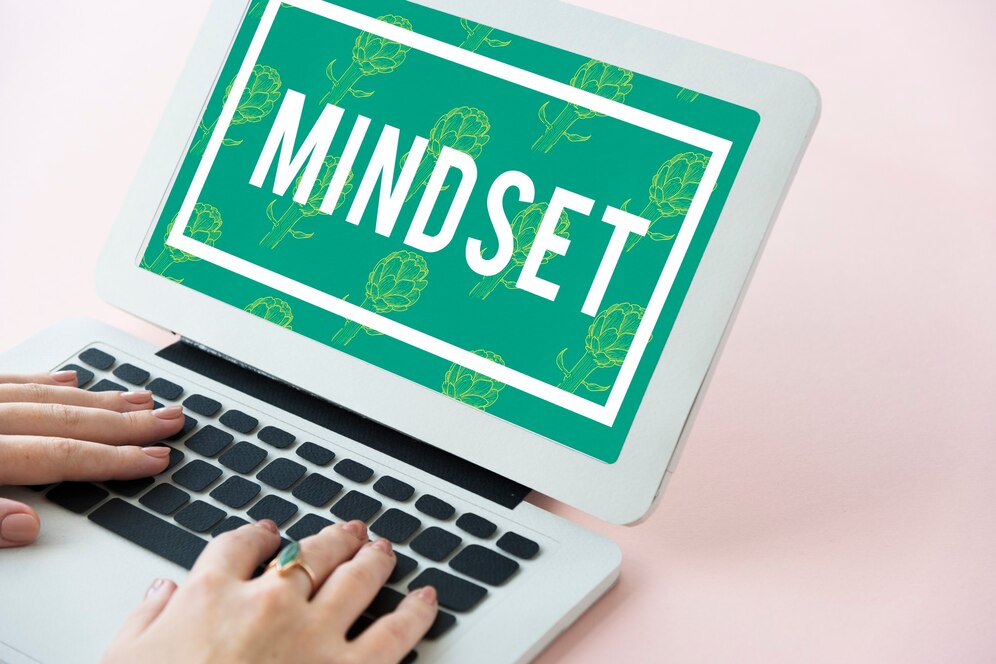

Characteristics of a positive mindset
Having a positive mindset is more than just wearing rose-colored glasses. It’s about seeing the good in situations, believing in your abilities, and bouncing back from setbacks. Some of the main characteristics include:
1. Optimism: the belief that good things will happen and that your efforts will lead to positive outcomes. Instead of saying, “I can’t do this,” a person with a positive mindset would say: “I can try to learn how to do this.” Having a positive mindset will give you more motivation and persistence because you’ll realize that you can change your life however you want.
2. Resilience: the ability to recover from difficulties and adapt to challenging situations. Resilience is an important characteristic of a positive mindset. Resilient people have a realistic outlook, they are not easily discouraged and are determined to overcome obstacles. To become more resilient practice mindfulness, set realistic goals, and surround yourself with supportive people.
3. Gratitude: recognizing and appreciating the positive aspects of life. Being grateful means that you have a deep sense of appreciation for the good things in life. It’ means you find all the good you have in your life, feel grateful for it, and realize how lucky you are. To become more grateful change your mindset and really focus on positive experiences. To start with the gratitude practice check Best gratitude exercises to boost your mood + journal prompts or if you’re a fan of journaling I collected 100 best gratitude journal questions.


4. Open-mindedness: being open-minded helps you consider different perspectives and solutions. Being open-minded will help you learn from other people’s experiences, see and understand their point of view and it’ll help you gain new knowledge. You never know when someone’s experience or knowledge will help you down the way.
5. Curiosity: is what drives you to learn and grow. Being curious is one of the biggest things people are missing out on. If you’re curious you’ll search for answers, ask questions, try to figure out things that will open up new experiences, and keep your mind active. Ask more questions, read, explore, and have fun.
6. Willingness to learn: means being open to gaining new skills and knowledge continually. This goes hand in hand with being curious. If you’re willing to learn you will take up new challenges and always seek answers and feedback. There is never too much knowledge to have so be willing to learn, explore, and be curious.
7. Empathy: the ability to understand and share the feelings of others. Having empathy makes your relationships stronger, improves your communication because it’s easier for you to see and understand the other person and fosters a supportive environment. If you want to be more empathethic listen actively, observe body language, and practice putting yourself in others’ shoes.


8. Self-awareness: the conscious knowledge of your own character, feelings, motives, and desires. It helps you understand your strengths and weaknesses, leading to better self-regulation and success. Being self-aware will help you see where you can improve, and what are your strengths and weaknesses and you’ll be open to changing and improving yourself. If you want to become more self-aware meditate regularly, keep a journal, and seek honest feedback.
9. Positive self-talk: involves talking to yourself in a positive, constructive way. Try replacing negative thoughts like “I can’t handle this” with “I am capable of managing this situation.” Positive self-talk will improve your confidence and reduce your stress since you won’t be acting like your biggest enemy. For more tips on this check Practical guide to positive self-talk: tips and techniques.
10. Determination: the firm decision to do something, resolve and deal with challenges, and achieve a goal. To stay or become more determined set clear goals, break them into smaller tasks, and celebrate small achievements. Embrace challenges as opportunities to learn and know that no matter what, at the end you’ll achieve what you set your mind to.
11. Adaptability: helps you navigate change and overcome unforeseen challenges. To enhance your adaptability stay open to new ideas, be ready to change or adjust your plans, and maintain a flexible mindset.


12. Proactivity: taking control of situations by making things happen rather than waiting for them to happen. Being proactive means you know you can change yourt life, you can make every change you decide to make and that life is in your control. To become more proactive set daily goals, prioritize tasks, and take responsibility for your actions. If you struggle with being proactive and you procrastinate way too often you can check 10 ways to stop procrastinating once and for all.
Characteristics of a negative mindset
A negative mindset can feel like carrying a dark cloud over your head that blocks the sunshine. It affects how you perceive the world and your place in it. Here are some common traits of a negative mindset:
1. Pessimism: seeing the worst in every situation. Instead of looking at the glass half-full, you focus on what’s missing. You focus on what you don’t have, how sucky life is, how everything goes wrong and how life will forever be this way. Gratitude is what helps the most with it, it helps you see what you have and focus on all the positive aspects of your life instead of focusing on the negative.
2. Self-doubt: constantly questioning your abilities and worth. If you keep doubting yourself, thinking how you can’t do this and can’t do that and that you’ll fail anyway that usually leads to procrastination and missed opportunities. Self-doubt affects your grwth, keeps you stuck and prevents you from reaching your full potential. If you’re struggling with procrastination check 10 ways to stop procrastinating once and for all.


3. Perfectionism: the need to be flawless. While aiming for high standards is good, perfectionism is paralyzing. It stops you from completing tasks and keeps you freezed due stress and frustration. I love quote by Tony Robbins on perfectionism:
“People always try to be perfect. That’s why they don’t start anything. Perfection is the lowest standard in the world. Because if you’re trying to be perfect, you know you can’t be. So what you really have is a standard you can never achieve. You want to be outstanding, not perfect.“
4. Victim mentality: when you believe bad things always happen to you and that you have no control over your life. If you keep searching for someone to blaim why your life is like this, or blame your life circumstances or whaever else, it stops you from taking responsibility for your actions and leads to feelings of helplessness and resentment. We’re all in charge of our own lives, and if we’re not satisfied with how our life is we can blame ourselves and ourselves only.
5. Negative self-talk: refers to your inner voice making critical, negative, or punishing comments. Saying things like “I’m not good enough” or “I can’t do this” lowers your self-esteem and affects your mental health. If you’re your own worst enemy you can expect yourself to feel good, be confident or trust your abilities.
6. Overgeneralization: seeing a single negative event as a never-ending pattern of defeat. For instance, if you fail a test, you believe you’re bad at all tests or that you’re stupid. Overgeneralizing distorts your reality and makes you view your capabilities in a non realistic way.


7. Emotional reasoning: accepting your negative emotions as truths. Feeling anxious before a presentation doesn’t mean you’re unprepared. Having a bad day doesn’t mean your life suck. If you feel that your negative emotiond are thruts means you gave up and decided that the life you’re living is the truth and will forever be like this. Take charge of your life, work and improve your mindset and yourself.
8. Defensiveness: reacting with hostility to any criticism, whether constructive or not. Being so defensive and not open to feedback or constructive criticism will put pressure and stress on your relationships, will make it impossible to grow and become the best version of yourself. Try to take constructive criticism as a tip on how you can improve and whenever someone shares constructive criticism with you, remember it, thnk about it and see if maybe they shared something you can change and will improve your life.
9. Blame-shifting: refusing to take responsibility for your actions, blaming others instead. It goes hand in hand with victim mentality. We’re all responsible for ourselves and for our own lives. Give yourself a reality check, get clear on where you sare in life and work towards changing it and developing yourself.
10. Catastrophizing: expecting the worst possible outcome in any situation. This pattern increases stress and anxiety, and makes it hard to function effectively.
11. All-or-nothing thinking: seeing things in black and white, with no middle ground. For example, you might see yourself as a success or a complete failure. This mindset leads to unrealistic expectations and chronic dissatisfaction. It can also keep you frozen in the perfectionism cycle, waiting and trying to be perfect before doing anything, so you stay stuck and do zero becausde no one ever will be perfect.
12. Envy and jealousy: resenting others who have what you want. Being envy and jealoud of someone else does nothing good for you but create bitterness and erode friendships. It’s ok to wish for things other have but that should give you motivation to do more and do better.

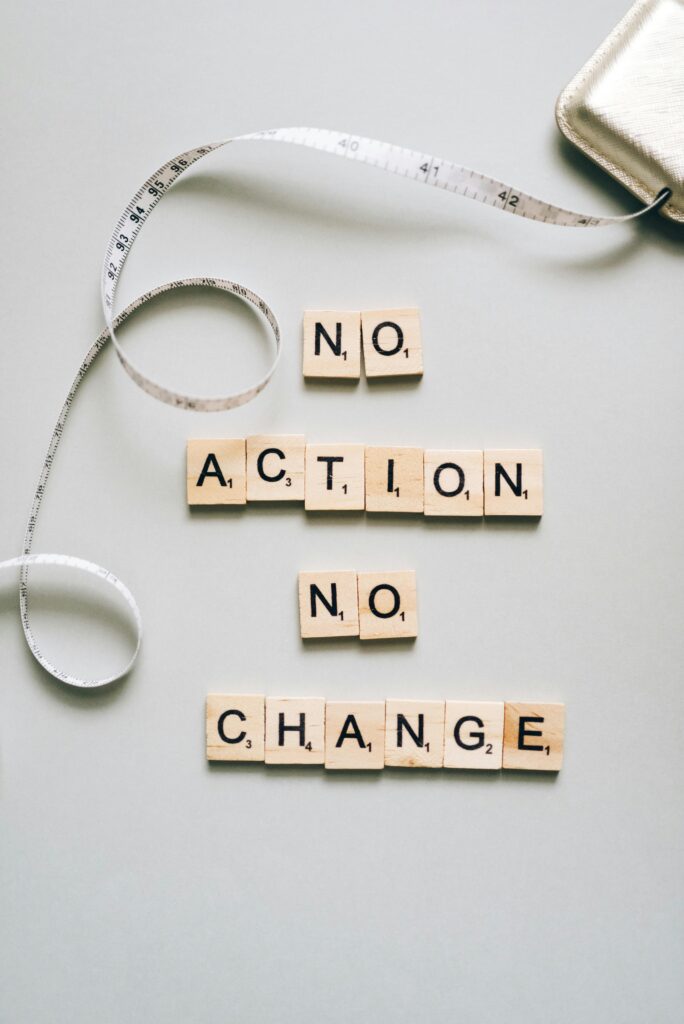
Recognizing these negative mindset traits is the first step towards change. Reflect on which of these traits resonate with you and consider how they might be holding you back. Becoming more aware allows you to take actionable steps towards a more positive and fulfilling life. In order to change and improve ourselves we must admit to ourselves where we are and where we want to go.
Usually having the reality check of who we are is not the most comfortable thing in life, but it’s the most important step on our way to becoming best versions of ourselves.
Comparing positive vs negative mindset thought patterns
Your mindset can shape your life in ways you may not even realize. Whether you lean towards positive or negative thinking, your thoughts and emotions affect your whole life, shape how you react to things, how you experience life and affect everything from your relationship, your work and success to how you feel in day to day life.
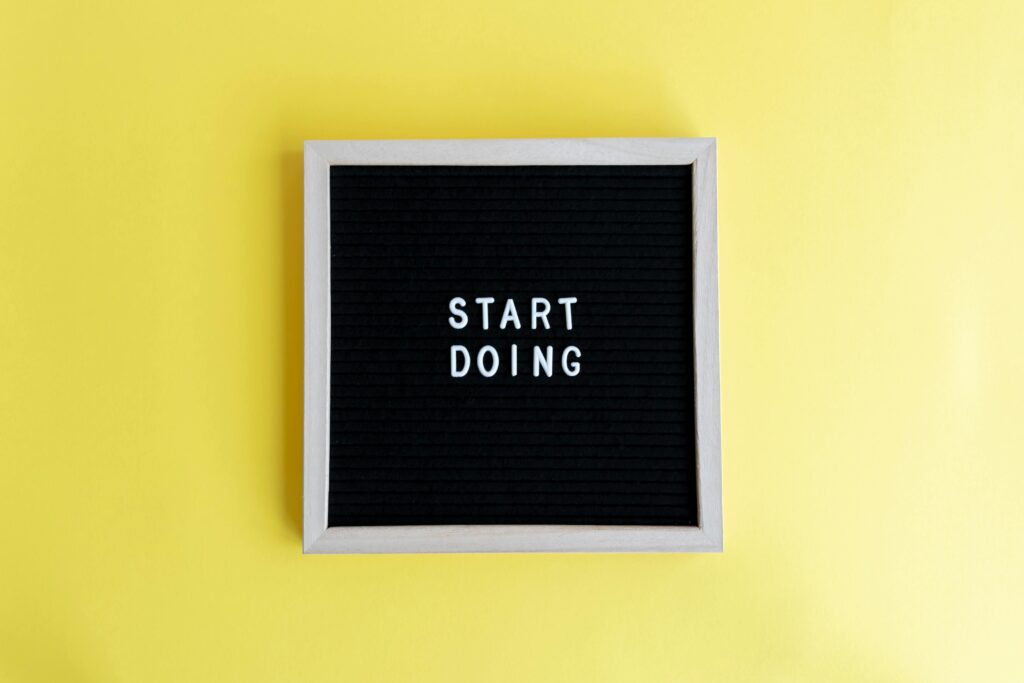
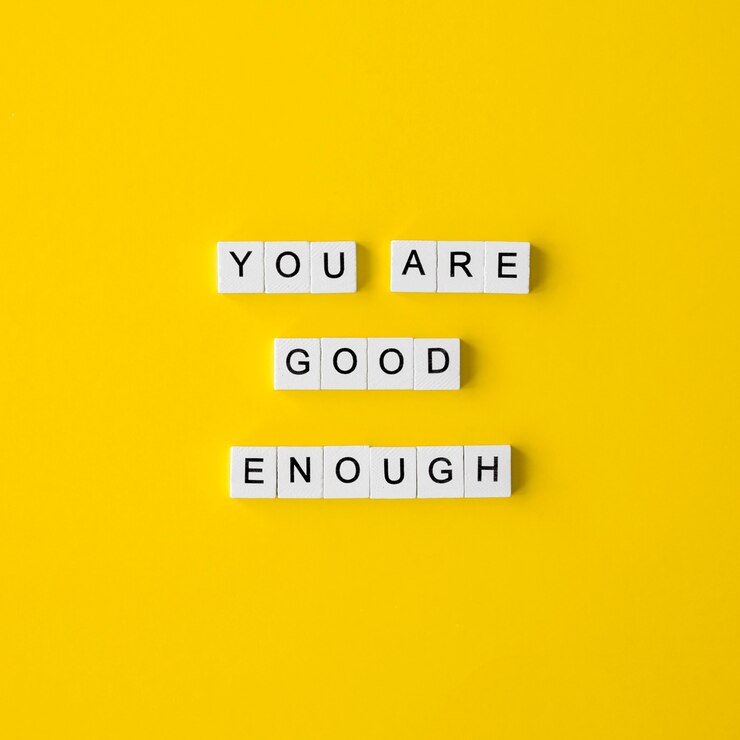
Our thought patterns show clear differences based on our mindset. People with a positive mindset usually have thoughts that reinforce confidence and hope. They look at setbacks as opportunities for growth and learning. Their thinking is geared towards solutions and possibilities.
On the other hand, those with a negative mindset often find themselves trapped in a cycle of pessimism. Their thoughts are more likely to be self-defeating and they focus on problems rather than solutions. This mindset often leads to a sense of helplessness.
Positive mindset
- Optimism:
- Thought pattern: Believes that good things will happen, even in challenging situations.
- Behavior: Approaches life with hope and confidence, expecting positive outcomes.
- Self-talk:
- Thought pattern: Uses encouraging and positive language towards oneself.
- Behavior: Practices self-care and positive reinforcement, which boosts self-esteem, confidence and resilience.
- Problem-solving:
- Thought pattern: Focuses on solutions rather than problems.
- Behavior: Actively searches for ways to overcome obstacles and views challenges as something to overcome and as opportunities for growth.
- Perspective:
- Thought pattern: Finds silver linings and learns from every situation.
- Behavior: Has a balanced view and sees positive even in tough, not the best situations.
- Resilience:
- Thought pattern: Sees setbacks as temporary and managable and realises this too shall pass.
- Behavior: Recovers quickly from disappointments and setbacks and keeps moving forward with new knowledge.
- Gratitude:
- Thought pattern: Acknowledges and appreciates the good things in life.
- Behavior: Practices gratitude, which leads to greater overall happiness and contentment.
- Self-belief:
- Thought pattern: Trusts in own abilities and potential.
- Behavior: Pursues goals confidently, believing in personal success.
- Future outlook:
- Thought pattern: Views the future with excitement and anticipation of positive experiences.
- Behavior: Sets ambitious goals and works towards them with enthusiasm.
- Comparisons:
- Thought pattern: Focuses on self-improvement rather than comparing to others.
- Behavior: Feels satisfied with personal progress and doesn’t focus on feelings of envy or inadequacy.
- Learning from failure:
- Thought pattern: Sees failures as learning experiences.
- Behavior: Adapts and grows from mistakes, gains new experiences which leads to continuous improvement.


Negative mindset
- Pessimism:
- Thought pattern: Expects the worst in situations, doubting positive outcomes.
- Behavior: Approaches life with apprehension and fear, often giving up before trying.
- Self-talk:
- Thought pattern: Uses critical and discouraging language towards oneself, being its own worst critic.
- Behavior: Engages in self-sabotage and negative reinforcement, lowering self-esteem and motivation.
- Problem-focusing:
- Thought pattern: Focuses on problems rather than seeking solutions.
- Behavior: Feels overwhelmed and stuck, unable to move past obstacles.
- Perspective:
- Thought pattern: Focuses on negative aspects, overlooking the positives.
- Behavior: Has an unbalanced perspective, feeling stressed and upset.
- Fragility:
- Thought pattern: Sees setbacks as permanent and something you can’t overcome, often views setbacks as a reason to give up.
- Behavior: Takes longer to recover from disappointments, often feeling defeated.
- Ingratitude:
- Thought pattern: Overlooks or undervalues the good things in life, lacks on finding gratitude in life and disssatsfied with everything good in life.
- Behavior: Practices little to no gratitude, leading to feelings of dissatisfaction and unhappiness.
- Self-doubt:
- Thought pattern: Constantly questions one’s abilities and potential.
- Behavior: Avoids taking risks or pursuing goals, fearing failure.
- Future outlook:
- Thought pattern: Views the future with dread and anticipation of negative experiences.
- Behavior: Sets low or no goals, often feeling hopeless about the future.
- Comparisons:
- Thought pattern: Frequently compares oneself to others, often feeling inferior.
- Behavior: Experiences envy and low self-worth, feeling inadequate.
- Avoiding failure:
- Thought pattern: Sees failures as a personal statement and something that defines us.
- Behavior: Avoids trying new things because of fear of failing, which leads to stagnation and being stuck.
Learn more about how emotional responses are influenced by mindset in this insightful article.
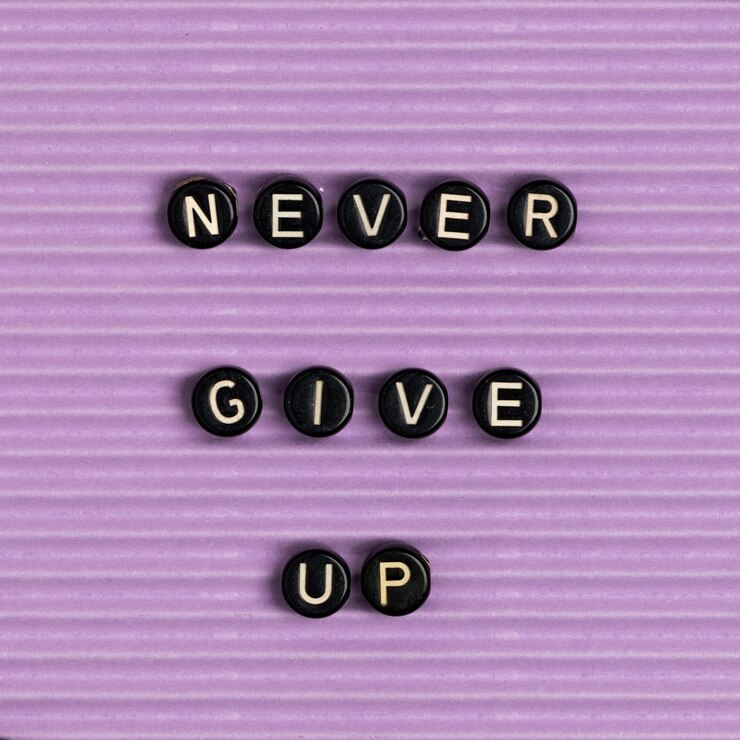

Positive vs negative mindset questionnaire
Rate each statement on a scale from 1 to 5:
Strongly disagree (1), disagree (2), neutral (3), agree (4), strongly agree (5)
1. I believe that even difficult situations will turn out well in the end.
2. I often tell myself that I am capable and can handle challenges.
3. When I’m faced with a problem, I focus on finding solutions rather than focusing on the problem.
4. I try to find something positive in every situation, even if it seems negative at first.
5. I bounce back quickly after setbacks and look for new opportunities.
6. I regularly reflect on things I am grateful for, even during tough times.
7. I have confidence in my abilities to succeed.
8. I look forward to the future and believe it holds good things for me.
9. I rarely compare myself to others and focus on my own progress instead.
10. I see failures as opportunities to learn and grow, rather than as reflections of my abilities.
11. I feel comfortable seeking support from others when I need it.
12. I use healthy coping strategies to manage stress and don’t let it overwhelm me.
13. I believe I can have a positive impact on others and my environment.
14. I accept that some things are beyond my control and focus on what I can change.
15. I am kind to myself and don’t let my inner critic dominate my thoughts.
After rating each statement, sum up your scores to determine your overall mindset. Add up the numbers you selected for each statement to get your total score:
60-75: You have a very positive mindset.
45-59: You have a generally positive mindset, with room for growth.
30-44: You have a neutral mindset and can benefit from developing a more positive outlook.
15-29: You tend to have a negative mindset.


How to develop a positive mindset
Like you can change your mindset from fixed to growth mindset, you can change your mindset from a negative to positive one too. Developing a positive mindset will transform your life by helping you focus on the good things rather than the bad.
Developing a positive mindset takes practice, just like everything else in life. But the more you practice the easier it gets. I’ve been down the negative mindset pity hole and I managed to get out. I’ll share the techniques that helped me.
Decide you want a change
This may sound simple and a bit weird, but until you decide that you want a change I can share 1000 tips, tricks, and techniques and nothing will change. Until you decide that you want to change your life and yourself or your mindset, nothing will change.
So first step is deciding that you’re actually ready to do the work and change. Making that decision is the biggest step that a lot of people sadly fail to do, and prefer to stay in their comfort zone, even if the comfort zone is toxic for them.
Practicing gratitude
I feel like a stuck record with repeating to practice gratitude, but once you do and stick to it, it really makes a huge difference. When you focus on the positive in your life, your focus goes from thinking about all stuff negative to thinking about positive stuff.


It can be hard or feel weird in the beginning but the more you practice the easier it gets. I like to start my mornings with gratitude practice, so I write a list of things I’m grateful for each morning on my phone.
Write things you’re thankful for each day, and feel the emotions of gratitude. The things you write can be super small like a cup of coffee you had this morning, to bigger ones. Whatever makes you feel grateful is the thing to write. When you’re writing the things you’re grateful for be specific. Don’t write general statements like “I’m thankful for my family”, but specify for example “I’m thankful for my sister because she helped me with…”.
Whenever we’re changing it takes time for those changes to become a habit for us. So make sure you take time for gratitude each day. You can check the 100 best gratitude journal questions to help you get started if you’re not sure on what to write, or if you want to check other gratitude exercises check Best gratitude exercises to boost your mood + journal prompts.
Try practicing gratitude for a month and you’ll see that your mindset and how you view your life changed.
Challenging negative thoughts
Negative thoughts and the never-ending loop of negativity that we so easily get trapped in is actually just making us feel bad. What helps with changing your mindset is reframing your negative thoughts.


This process is known as cognitive restructuring and involves several steps:
- Identify negative thoughts: Pay attention to when you are thinking negatively or when you’re talking to yourself. Focus throughout the day and try to catch your thoughts especially when they start going negative. When we notice how many bad things we say or think to ourselves each day can be a shock, it’s a lightbulb moment when we realize how awful we talk to ourselves. Some examples of negative thoughts are: “I’m not enough”, “I can’t do anything right”, “I’m so ugly”, “I’m no fun to be around”, “I should be doing better in my life by now”, “I’ve never achieved anything”…
- Challenge the thoughts: When you identify the negative thoughts, challenge them. Ask yourself if the thoughts are based on facts or assumptions. If you think for example “I can’t do anything right”. Ask yourself ok, is this thought logical and realistic? If I never do anything right then I guess I mess up 100% of things I do every day, right? The answer is obviously no. Ok so then what do I do right? Well, I did this right, and that right, and I did that ok. Write down the negative thought and write all the facts that challenge or minimize the negative thought.
- Reframe: Replace negative thoughts with more positive or realistic ones. So we determined that you don’t mess everything up but maybe a few things, right? Maybe you mess up 5% of things. Ok, so does that change the fact that I never do anything right? Try reframing the thought to: “I’m human, I make mistakes, but I learn from them and grow. It’s ok to make mistakes.”
For example, if you think, “I’ll never be good at this,” reframe it to, “This is a challenge, but I can improve with practice.” These techniques are powerful tools in developing a positive mindset. You can learn more about cognitive restructuring here.
Surround yourself with positivity
If you’re surrounded by negativity, it’s pretty hard to think positively. Who we surround ourselves with is very important and can change our lives tremendously. If you’re surrounded with people who’re never satisfied with anything, complain, gossip, and just search for anything wrong in their lives there’s not a big chance that you’ll be positive.

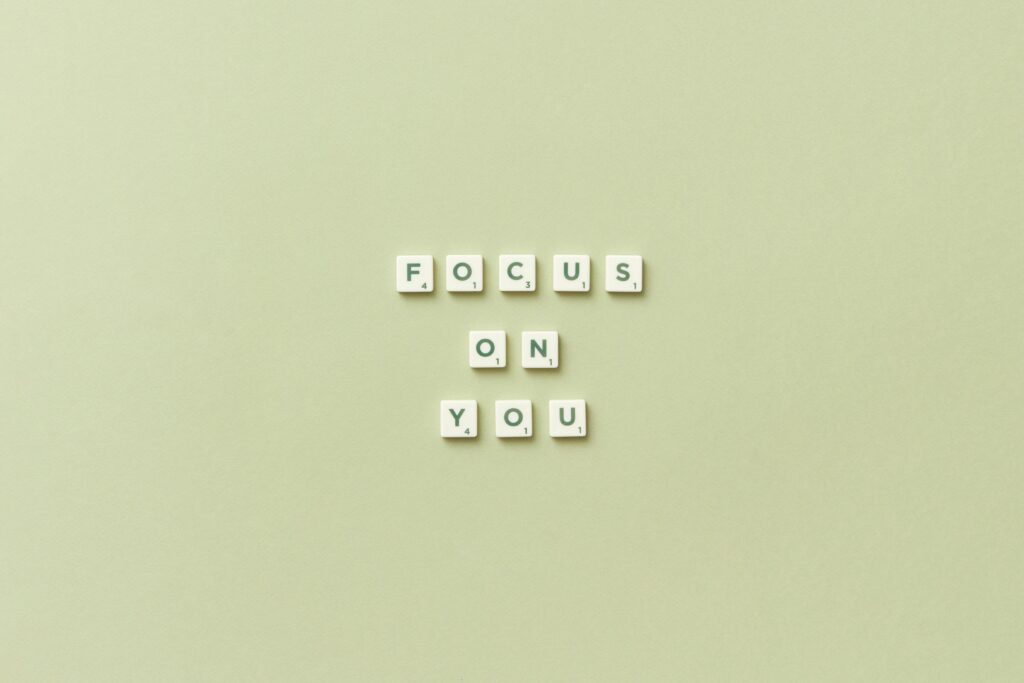
The same goes for social media and other websites. If you follow profiles, watch news, and other websites that are full of negative things, negative news, and all in all negativity, then it’s hard to see the positivity in life.
Building supportive relationships and being careful of what you let into your mind will improve your outlook on life. Here are some steps you can take:
- Choose positive friends: Spend time with people who uplift and encourage you. Surround yourself with people who support your self-development journey and people who are ready to change, improve their lives and grow with you.
- Avoid negativity: Distance yourself from negative influences. If you fill your brain with negativity it’s hard to expect that you’ll change your outlook on life and be positive. I like to imagine I have an imaginary shield that protects me from all the negativity that tries to enter my brain. Even if someone starts complaining I imagine my imaginary protective shield is shielding me from that and protecting me from negative energy that those people try to put on me.
- Create a positive space: Surround yourself with things that make you happy, like photos, plants, or inspiring books. Print quotes or inspiring sayings and hang them up, choose a background for your phone or computer that uplifts you, listen to music that uplifts you, and make your space and life an enjoyable space for yourself.
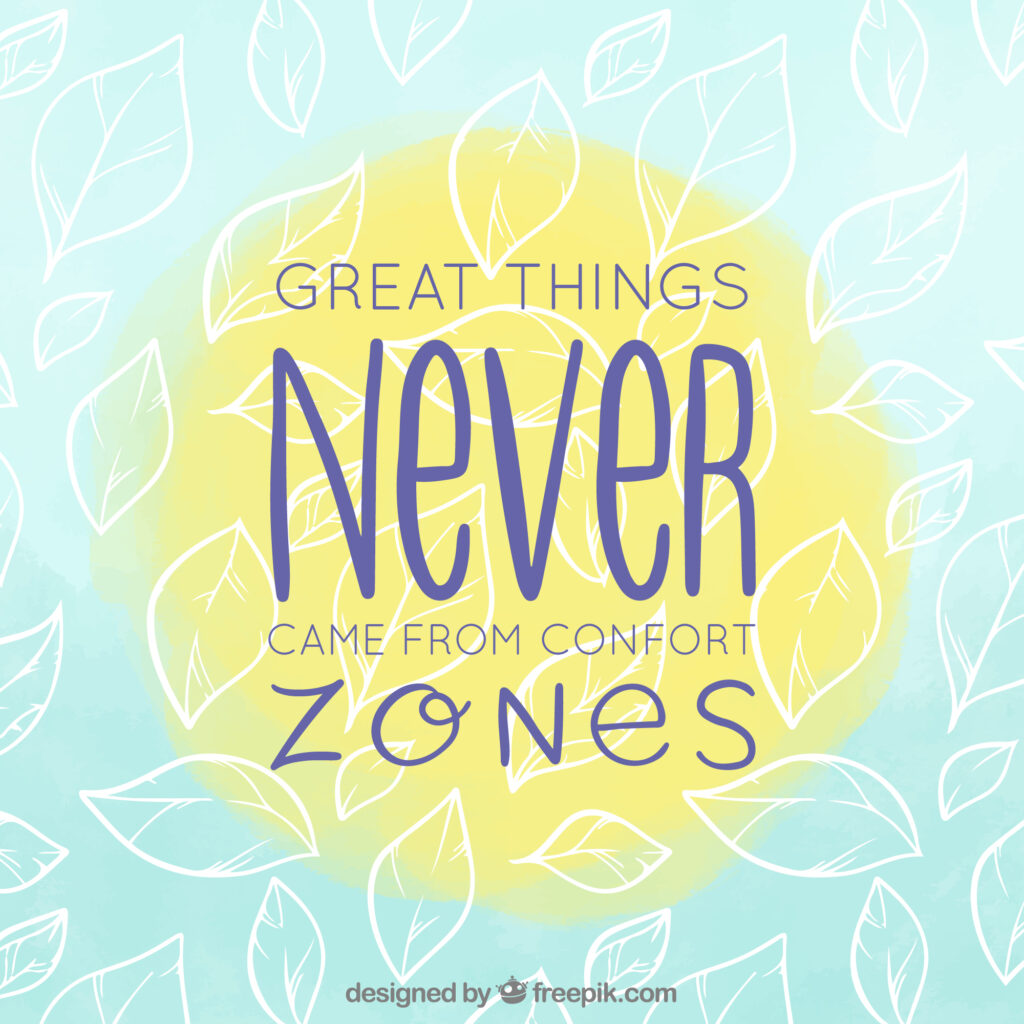

Choosing positivity opens doors to happiness and success, while negativity holds you back. Take action, doesn’t matter how big or small and start changing your life.
By choosing a positive mindset, you invite growth and opportunities into your life. On the other hand if you’d like to remain where you are and keep negative thinking just know how it limits your potential.
We can be whoever we want to be, but it requires work so challenge yourself to focus on positivity and witness how this shift improves your daily life.
Commit to this journey. Your future self will thank you.
And don’t forget, you got this and everything will be ok!







